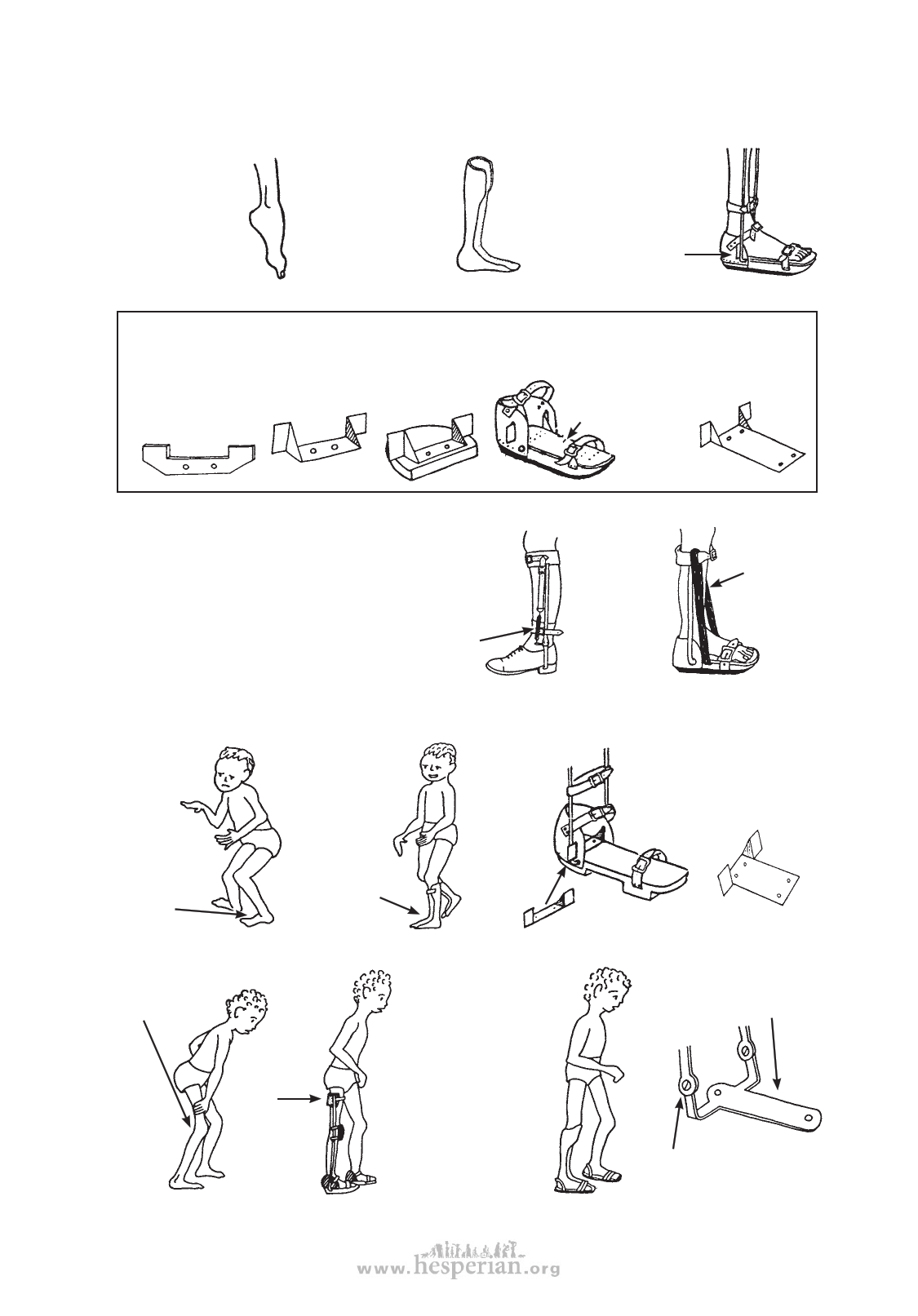
BRACES (CALIPERS)
HOW TO CONTROL UP AND DOWN MOVEMENT OF FOOT
CONTROLLING FOOTDROP AND TIPTOE DEFORMITIES
A child with
‘footdrop’ or a
floppy foot that
hangs down so
that she has to
lift her leg high
with each step,
needs a brace
that holds
the foot up.
Use a plastic
brace,
or a metal
brace with a
backstop that
lets the foot
bend up, but
not down.
545
Making a backstop
Cut a thin plate
of steel.
Bend it.
Screw it to the
heel piece.
Assemble clog.
Put in a
lining to
protect
foot.
Note: A child with
spasticity whose foot
pushes down hard may
need a longer plate
to keep
it from
working
loose.
Toe-raising spring
Another way to help prevent
footdrop is with a toe-raising
spring.
This is
a more
complicated
design.
wire spring
This is a
simpler
design.
piece of
car tire
inner tube
CONTROLLING FOOT-RISE AND UNWANTED KNEE-BEND
A child who
walks with
knees bent
and feet
bent up,
A child whose weak
leg bends at the knee
when he tries
to put weight
on it,
may (or may
not) be helped
by a brace
that prevents
the foot from
bending up as
much.
If possible,
use a stiff
plastic brace.
may need
an above-
knee
brace.
Or use
a metal
brace
with
a stop
placed
in front
of the
upright
bars.
But sometimes a
below-knee brace
that stops the foot
from bending
up will help
push the knee
back enough so
that the child
can support his
weight on it.
(See p. 557.)
The brace can be
of stiff plastic, or
metal with stops to
prevent foot-rise.
A strong stop with a
long plate will be less
likely to work loose or
damage the clog.
If a brace with an ankle
joint is used to prevent the
ankle from bending up,
the base piece will need a
long, strong, forward plate.
The joint can be adjusted
to allow only the desired
range of motion.
disabled village children